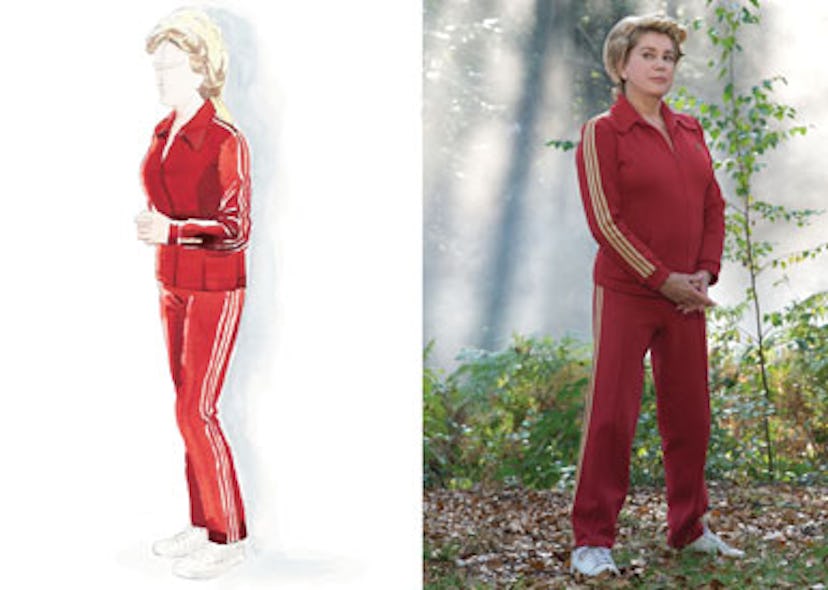French Dressing
I will see anything Catherine Deneuve does, from her Lars von Trier-encouraged singing with Bjork in “Dancer in the Dark” to her sharp-mouthed matriarch in “A Christmas Tale.” When I learned she was playing a...

I will see anything Catherine Deneuve does, from her Lars von Trier-encouraged singing with Bjork in “Dancer in the Dark” to her sharp-mouthed matriarch in “A Christmas Tale.” When I learned she was playing a 1970s era housewife in François Ozon’s “Potiche” (French for “trophy wife”), opening this Friday, and saw the promotional image of her in a red tracksuit, my heart may have skipped a beat.
Deneuve brings her usual commitment and lack of self-consciousness to the role of Suzanne in this almost slapstick comedy, based on a play of the same name. Set in a village town in 1977, “Potiche” follows Suzanne as she evolves from a neglected housewife to the head of her father’s local umbrella factory and eventually, into a politician, as her Partridge family-worthy husband, daughter, son and grandchildren (think turtlenecks tucked into bell bottoms and Farrah Fawcett hair) and her former lover (Gerard Depardieu) look on with a mix of disdain and pride.
Equally a star in the film, however, are the clothes, crafted by costume designer Pascaline Chavanne, who worked previously with both Deneuve and Ozon on the 2002 “8 Women.” Deneuve goes through 23 looks, from that opening red tracksuit, a wool and lycra mix made specially by the company Veron to a series of blindingly bright colored necktie-blouses, dresses, skirt suits and sweater covered ensembles.
Chavanne sought a high level of authenticity, looking to women’s magazines from that time period like Aujourd’hui Madame and the broadcast archives at the Center for Television for initial inspiration before pulling vintage labels like Tiktiner and Dejarebe. She also sourced fabrics like 1940s silk in Vienna, jersey from the vintage textiles company Tricosa and uncovered a treasure trove of never-worn synthetic looks from a factory in Lyon. She reworked the latter, fitting them to Deneuve, and dyed many of the other textiles to achieve a late 70s-worthy color palette.
“My idea is that the perfect woman, the trophy wife from the 1970s would be very practical. A very, very good housewife. And when she dresses, she dresses primarily for comfort,” explains Chavanne, who relished working with Deneuve. “She is so generous with her time. She really participates in the discussion of the costumes, in touching the fabrics. She really understood all the choices we made.”
And those decisions not only served to recreate the era, but also to chart Suzanne’s trajectory from housewife to empowered woman.
“At first she’s wearing those floral housedresses. And then when she moves on to taking over the factory, we begin to put her in suits and she has a much more business look. And then there’s also the scene where she is with Gerard Depardieu and she is wearing purple. We used that color because it’s much more sensual,” says Chavanne. “Then when she goes through her political phase, she begins wearing suits again and a tie. For those particular costumes, my inspiration was [French politicians] Simone Veil and Segolene Royale.”
Though in the end, after all the outfit and position changes, Deneuve’s Suzanne returns to a blue version of the tracksuit in which she began the film.
“Because she really is always the same,” explains Chavanne. “Her husband treated her like a trophy wife, but she herself was not a trophy wife. So basically it says…she has found herself and she was herself, always.”